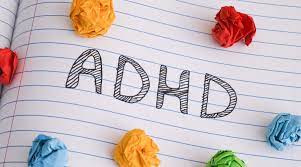
Contents
Attention Deficit Hyperactivity Disorder (ADHD) is a neurodevelopmental disorder characterized by difficulties with attention, hyperactivity, and impulsivity. However, many individuals with ADHD management also struggle with emotional regulation, which can manifest as intense emotions, mood swings, and difficulty managing stress. Learning effective tools and techniques for emotional regulation is crucial for individuals with ADHD to navigate daily life successfully. In this comprehensive guide, we’ll explore the relationship between ADHD and emotional regulation, common challenges faced by individuals with ADHD, and practical strategies and techniques to improve emotional regulation skills.
Understanding ADHD and Emotional Regulation
What is ADHD?
ADHD is a complex neurodevelopmental disorder that affects individuals across the lifespan. It is typically diagnosed during childhood but can persist into adulthood. The core symptoms of ADHD include:
- Inattention: Difficulty sustaining attention, being easily distracted, and struggling with organization and task completion.
- Hyperactivity: Restlessness, fidgeting, and difficulty staying still or engaging in quiet activities.
- Impulsivity: Acting without considering consequences, interrupting others, and difficulty waiting or taking turns.
Emotional Regulation in ADHD
In addition to the core symptoms of ADHD, many individuals also experience challenges with emotional regulation. Emotional regulation refers to the ability to manage and respond to emotions in a healthy and adaptive manner. Common emotional regulation difficulties in ADHD may include:
- Intense Emotions: Individuals with ADHD may experience emotions more intensely than their peers, leading to frequent mood swings and emotional outbursts.
- Difficulty Coping with Stress: Everyday stressors can feel overwhelming for individuals with ADHD, leading to feelings of anxiety, frustration, or agitation.
- Impulsive Reactions: Difficulty controlling impulses can result in impulsive or reactive responses to emotional stimuli, such as lashing out in anger or frustration.
Common Challenges Faced by Individuals with ADHD
Executive Function Deficits
ADHD is often associated with deficits in executive functioning, which are cognitive processes responsible for goal-directed behavior, planning, organization, and self-regulation. Executive function deficits can impact emotional regulation by making it challenging to:
- Anticipate Consequences: Difficulty predicting the outcome of impulsive actions can lead to regrettable decisions and emotional distress.
- Plan and Problem-Solve: Inability to effectively plan and problem-solve in the face of emotional challenges can exacerbate emotional dysregulation.
- Initiate and Inhibit Responses: Impulsivity can interfere with the ability to initiate adaptive coping strategies or inhibit impulsive reactions to emotional triggers.
Sensory Sensitivities
Many individuals with ADHD also have sensory sensitivities, which can amplify emotional responses to environmental stimuli. Common sensory sensitivities in ADHD may include:
- Hyperactivity: Sensory-seeking behaviors such as fidgeting or seeking out intense sensory experiences to regulate arousal levels.
- Hypersensitivity: Overreacting to sensory stimuli such as noise, lights, or textures, leading to emotional overwhelm and dysregulation.
Tools and Techniques for Emotional Regulation in ADHD
1. Mindfulness and Meditation
Mindfulness practices involve bringing awareness to the present moment without judgment. Meditation techniques, such as focused breathing or body scan exercises, can help individuals with ADHD cultivate greater self-awareness and emotional regulation skills by:
- Reducing Stress: Mindfulness practices can lower cortisol levels and promote relaxation, helping individuals manage stress and anxiety more effectively.
- Increasing Emotional Awareness: By tuning into their thoughts and emotions, individuals can develop greater insight into their emotional experiences and learn to respond more skillfully.
- Enhancing Attentional Control: Mindfulness practices strengthen attentional control, allowing individuals to redirect their focus away from emotional triggers and toward more adaptive responses.
2. Cognitive-Behavioral Therapy (CBT)
CBT is a therapeutic approach that focuses on identifying and challenging maladaptive thought patterns and behaviors. In the context of ADHD and emotional regulation, CBT can help by:
- Identifying Triggers and Patterns: CBT techniques can help individuals recognize common emotional triggers and maladaptive coping strategies, allowing them to intervene before emotions escalate.
- Developing Coping Skills: CBT provides practical tools and techniques for managing stress, regulating emotions, and problem-solving effectively.
- Restructuring Negative Thinking: By challenging negative self-talk and cognitive distortions, individuals can develop a more balanced and adaptive perspective, reducing emotional reactivity.
3. Emotion Regulation Strategies
Specific emotion regulation strategies can help individuals with ADHD manage intense emotions and cope with stress more effectively. Some helpful techniques include:
- Deep Breathing: Taking slow, deep breaths can activate the body’s relaxation response and reduce physiological arousal.
- Progressive Muscle Relaxation: Systematically tensing and relaxing different muscle groups can promote physical relaxation and reduce tension.
- Positive Self-Talk: Encouraging and supportive self-talk can counteract negative thoughts and promote feelings of self-efficacy and resilience.
- Journaling: Writing about thoughts and emotions can provide an outlet for self-expression and help individuals gain insight into their emotional experiences.
4. Environmental Modifications
Creating an environment that supports emotional regulation is essential for individuals with ADHD. Some helpful environmental modifications include:
- Establishing Routines: Consistent routines and structure can help individuals with ADHD feel more organized and in control, reducing stress and anxiety.
- Minimizing Distractions: Creating a calm and clutter-free environment can help individuals stay focused and reduce sensory overload.
- Providing Sensory Supports: Using sensory tools such as fidget toys, noise-canceling headphones, or weighted blankets can help individuals regulate arousal levels and manage sensory sensitivities.
Conclusion
Emotional regulation is a critical skill for individuals with ADHD to navigate daily life successfully. By understanding the challenges associated with ADHD and emotional regulation and implementing effective tools and techniques, individuals can develop greater self-awareness, resilience, and adaptive coping skills. Mindfulness practices, cognitive-behavioral therapy, emotion regulation strategies, and environmental modifications are all valuable resources for enhancing emotional regulation in ADHD. With patience, practice, and support, individuals with ADHD can learn to manage their emotions more effectively and thrive in all aspects of life.